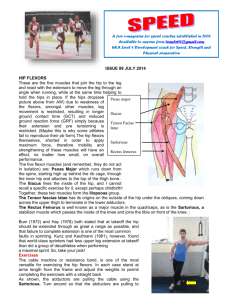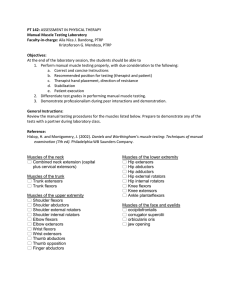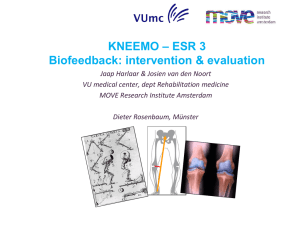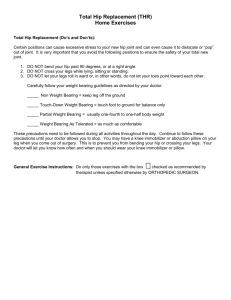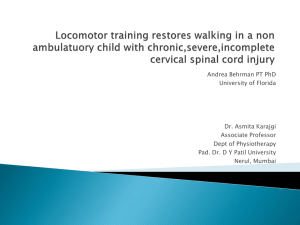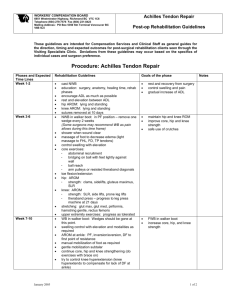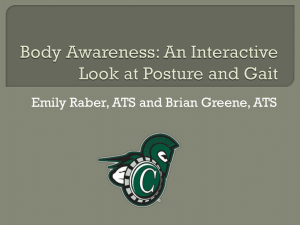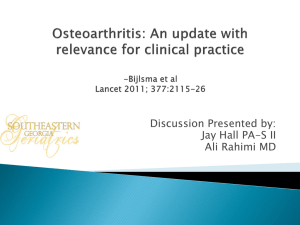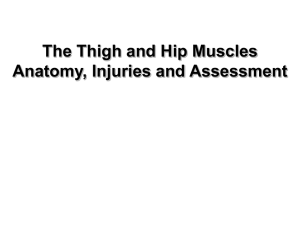Tam`s PowerPoint presentation
advertisement
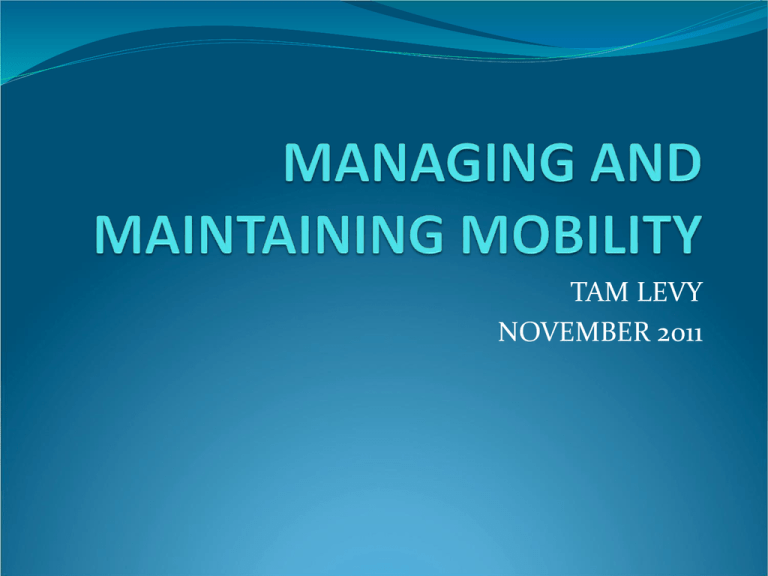
TAM LEVY NOVEMBER 2011 GAIT AND MUSCLE ACTIVITY 2 main components – STANCE and SWING STANCE – the phase from when the foot strikes the ground (60%) SWING – when the foot starts to leave the ground (40%) MUSCLE ACTIVITY STANCE – need ‘stability’ by activating extensor muscles at hip, knee and ankle SWING – need a ‘push off’ from calf muscle, then hip flexor to ‘pull’ leg through GAIT PROBLEMS In HSP there is a combination of spasticity and weakness This causes muscle imbalance and leads to compensatory movement patterns (‘tug-of-war’ analogy) ISSUES RELATED TO WEAKNESS EXTENSORS : a lack of strength at the knee may cause buckling or hyperextending (‘flicking’). Buckling could lead to falling, hyperext may cause knee pain HIP FLEXORS : can’t bring leg through straight so have to compensate and find another way e.g. hitching the leg or vaulting on the other leg DORSIFLEXORS (raise the foot) : toes can’t clear the ground, so we find another way e.g. hitch or drag toes ISSUES RELATED TO SPASTICITY KNEE EXTENSORS : ‘stiff’ leg that is hard to bend HIP ADDUCTORS : ‘scissoring’ gait which may lead to falls (as trip self) CALF : can’t get heel down, which impedes gait and stability, also makes it harder to clear foot MANAGEMENT AIM IS TO CONTROL SYMPTOMS AND MAINTAIN MOBILITY find what works for you – consult a neurophysiotherapist to get a personal, safe, specific program and treatment as needed. options would include stretches, exercises for specific muscle groups, ES (elec stimulation), medication, fitness STRETCHES SHORT TERM : to loosen up prior to exercise or mobility Likely to need to address calf, hip adductors, hip flexors, hamstrings website : physiotherapyexercises.com LONG TERM : consider positioning (eg wedge for hip adductors), splinting (eg AFO), serial casting for calf shortening EXERCISES ideal is ‘task-specific’, goal-directed and repetitive muscles likely to need addressing are hip abductors, extensors and flexors; knee extensors and flexors; ankle dorsiflexion (DF) - raise the toes/feet and plantarflexion (PF) - point the toes/feet can supplement with the use of electrical stimulation (ES), especially for DF (addressing toe-dragging) Electrical Stimulation: Methods Functional Electrical Stimulation (FES) Programmed stimulation sequence Gait Reach and grasp OTHER CONSIDERATIONS CONSIDER SAFETY at all times in positioning self for exercises DON’T overdo it – rest is important as well FITNESS is important- do what you can e.g. hydro, gym, exercise physiologist, tai chi WALKING AIDS – ensure correct aid and at correct height Seek the advice of a neurophysiotherapist. They have the skills to assess you, treat you and recommend a program.

